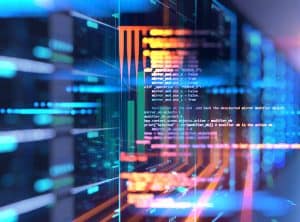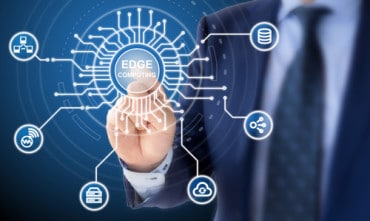
Adopting a DevSecOps approach will be the driving force that puts enterprises into pole position as edge leaders and ensure intelligent system success.
Edge computing has been one of the key drivers propelling new use cases off the drawing board and onto the field — from design to prototype to series A funding. The intelligent edge has emerged as we see the rise of systems that are increasingly smart, connected, and capable of providing business insights. These intelligent systems are operating at the edge of networks, closer to where data is generated. Intelligent systems such as autonomous vehicles, drones, energy networks, and advanced factory robots will have to handle massive amounts of data for smart decision-making. Increasingly, DevSecOps is critical for success.
These significant developments put a greater emphasis on the need for distributed cloud infrastructure, with edge solutions and cloud deployment accelerating across enterprise environments. With a global transition to 5G, distributed cloud will emerge as the preferred infrastructure model, driven by increased demand for flexibility, reduced latency, and support of a remote workforce. However, the development and deployment of intelligent edge systems comes with its own set of old and new world challenges.
The challenge with legacy applications
Legacy code continues to run in embedded systems for those mission-critical sectors – industrial, aerospace and defense, transportation, utilities – as it will take time to further modernize those systems with greater intelligence and automation. Because of the long system lifecycle, developers must mitigate years of patchwork fixes, enhancements, and technical debt accumulated when bringing these systems forward. This is likely the result of legacy architectures making the systems hard to scale. Any new code release triggers a scheduled downtime, so additional cost that could be avoided.
Layered on top of this is a shift in the developer workforce from boomer to millennial and beyond. Cloud-native trends driven by AI, 5G, and intelligent systems at the edge are leading a surge in demand for developers with new skill sets.
As the current generation of developers, who understand legacy code running in older languages, start to retire, colleges have not dedicated focused training for younger developers to work with these legacy codebases. This creates a major hurdle for enterprises looking to engineer greater flexibility into the fabric of their business and meet new demands. Enterprises must therefore act quickly and invest in the appropriate training and tools to support this workforce transition. Though there will be challenges, this also creates an opportunity to realign the future of intelligent systems at the edge around the newer cloud-native skills and thinking that recent graduates employ.
Speaking the right language
This new world driven by intelligent edge systems requires a range of new skills, thinking, and knowledge. Knowing where the data is primarily coming from, whether edge or cloud, can shape the way teams should be organized and what expertise is most critical.
With massive quantities of data to process and analyze in real time in an edge environment, developers must leverage automation, AI, and ML capabilities to better understand and use the data. This will see developers understand not only the error or the occurrence of a fault but the detail of what happened in the run up to the fault – vastly reducing the chances of incurring that fault again. Engaging with real-time analytics will see developers empowered to anticipate, identify and resolve faults or errors as or even before they happen.
Development teams will need to understand a breadth of coding languages and be well versed in data science before reaching this promised land of AI and ML infused systems. Equally, the teams will need to develop an understanding of application deployment, maintenance, and security from cloud to edge. Adaptability will also be key for developers to update and reprogram systems and software in these newer, more flexible environments. Modern developers should be encouraged to design with ambiguity in a modular way for systems to be more adaptable, deriving benefits and value from real-time insights.
DevSecOps is often intertwined with cloud computing and container technology. Developer trends show clear preferences and advantages when employing different programming languages, depending on the use case. Java and C# are still the languages of choice, though others programming languages are certainly gaining developer adoption, such as the plethora of languages that thrived in the Agile revolution – from Python to JavaScript to Go. They give developers the ability to quickly create the code and test it in Agile and DevSecOps environments.
DevSecOps will continue to play an instrumental role in the development of systems that breed a wealth of new use cases and applications at the network edge. Security must always remain front of mind as the attack surface grows along with a more distributed environment, securing the DevSecOps environment and providing the tools to ensure that the output is as secure as possible. DevSecOps will ensure customers receive the products they demand in the fastest time possible. Therefore it is critical developers work harmoniously with the rest of the business to fully understand customer and industry challenges. However, this is all theoretically unachievable if the skills gap is not addressed.
Crossing the finish line
As edge computing systems continue to become more ubiquitous, developers don’t only need to upskill. They must also be mindful of broader customer challenges. In an increasingly software-defined world, developing high-quality software is a top priority. Edge computing systems today pack many features that are all differentiated through the software. The expectation is that more features are delivered in less time and at lower cost without compromising the quality of the software. The need for continuous deployment means the entire process needs to be more automated and reliable.
Software culture and best practices are rapidly evolving. The practices of adopting Agile and DevOps for software developments are an inroad into edge computing systems. It demands the usage of modern software development tools, techniques, and programming languages. Developers are expected to familiarize themselves with modern tools without impacting customers’ productivity and efficiencies, regardless of the learning curve they’re faced with. Cybersecurity must also be at the forefront of the development and operations of these systems. With edge computing comes connected smart devices with different levels of connectivity and deployment scenarios. This increased attack surface requires an integrated secure development process, as well as security-rich features in the products that provide defense during deployment and thereafter, once in autonomous operation. The final challenge customers face is handling data at scale. They require that information be converted into actionable insight and failure to do so comes at the risk of security and safety of enterprise personnel.
The shift to the edge is occurring rapidly, spurred on by a greater impetus around distributed infrastructure and a desire to realize the potential of the intelligent edge. The advent of 5G brings promise closer to reality for edge computing environments, and intelligent enterprise systems demand security, safety, and reliability. Legacy code and current developer skillsets are not enough to achieve this. Developers will need a deep understanding of the new technologies that enable the automation and orchestration of a new generation of use cases at the network edge. 5G and the edge will propel enterprises into a fully digital, AI-driven future. Developers with crucial new skillsets, adopting a DevSecOps approach, will be the driving force that puts enterprises into pole position as edge leaders.






